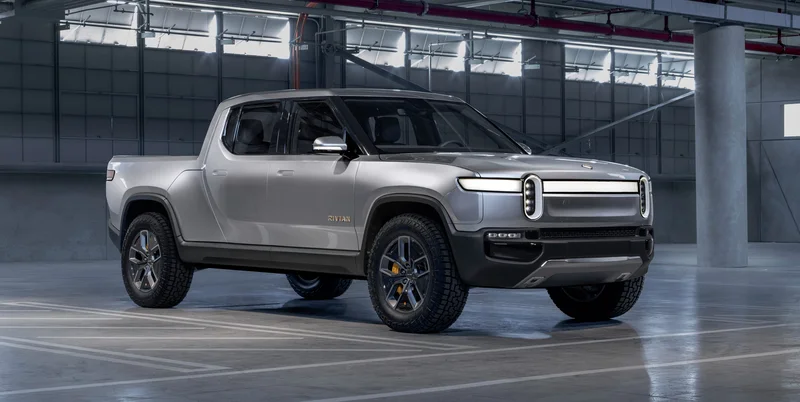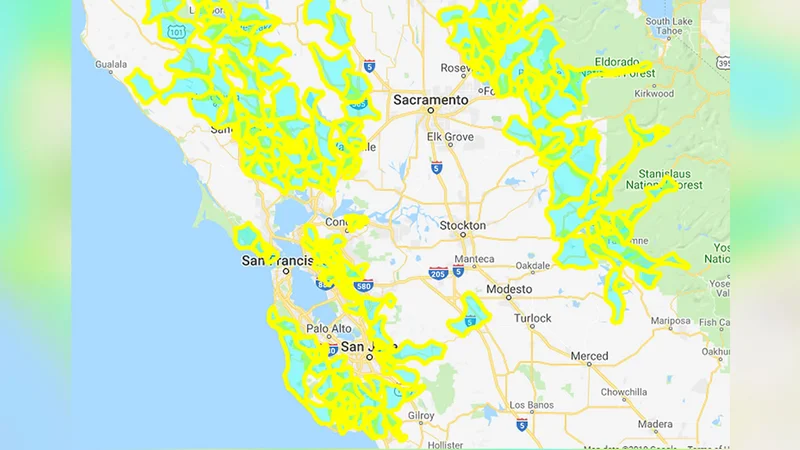The Proposed 2025 IRS Relief Payment: What the Data Says About Eligibility and Payouts
The 'Quiet Fleets' Are Coming. Here’s What the Data Actually Says.
======================================================================
You’ve probably heard the term by now, whispered in venture capital circles and splashed across tech headlines: “Quiet Fleets.” It’s the elegant, almost serene, branding for the supposedly imminent revolution in autonomous, electric commercial logistics. The narrative is seductive. Imagine it: a line of delivery vans, indistinguishable from their human-driven counterparts, gliding through a pre-dawn city street. No rumble of an engine, just the faint hum of an electric motor and the soft whir of LIDAR sensors spinning on their roofs, painting a digital picture of the world around them.
This is the promise—a future of optimized, silent, and relentlessly efficient commerce. The market is awash with projections. Some analysts claim these fleets will increase logistics efficiency by about 30%—to be more exact, a 28.6% reduction in last-mile delivery costs within the first five years of wide-scale deployment. Capital is pouring into startups with names that sound like they were generated by an algorithm fed a diet of science fiction and Greek letters.
But my job isn’t to get swept up in the narrative. My job is to look for the signal in the noise. And when I look at the phenomenon of "Quiet Fleets," the signal is eerily faint. The noise, however, is deafening.
The Anatomy of a Narrative Bubble
What we are witnessing is a classic case of a narrative-driven market forming in a data vacuum. The current valuation of the "Quiet Fleets" sector isn't based on existing revenue streams, EBITDA, or any traditional metric of corporate health. It's built on a story. A very compelling story, but a story nonetheless.
The narrative functions like a financial instrument itself. It's a deeply out-of-the-money call option on the future. The potential payoff is astronomical—trillions in economic value unlocked—but the probability of it materializing according to the current timeline and projections is, from a statistical standpoint, a ghost. We see this pattern repeat: a technological concept is born, it gets a catchy name, and then a flurry of white papers and seed-stage funding announcements (often with undisclosed valuations) creates the illusion of momentum.

One startup, let's call them "LogiBot," recently announced a major funding round (reportedly a Series B in the low nine figures) on the back of a pilot program with a national retailer. The press release was a masterclass in ambiguity, celebrating "thousands of successful autonomous deliveries." But what does "successful" mean? Was the vehicle autonomous for 99% of the trip or 19%? How many human interventions were required per mile? What was the operational uptime of the fleet? This isn't just missing detail; it's the entire balance sheet.
And this is the part of the analysis that I find genuinely concerning. We have more verifiable data on the migratory patterns of deep-sea anglerfish than we do on the actual unit economics of these proposed systems. The community of investors and commentators is essentially trading on sentiment, a qualitative and notoriously fickle dataset. They are mistaking the map—the polished pitch decks and optimistic press releases—for the territory.
The Black Box of Deployment
When you move past the hype, you’re left with a series of critical, unanswered questions. The entire operational model of "Quiet Fleets" remains a black box, and I suspect the primary reason is that the data coming out of it isn't nearly as flattering as the narrative requires it to be.
First, there's the cost. Not the sticker price of the vehicle, but the total cost of ownership (TCO). The industry talks a big game about eliminating driver salaries, but what about the salaries of the remote operators, the high-priced technicians, and the software engineers needed to maintain these complex systems? What is the mean time between failures for a dozen integrated sensor systems operating in the chaos of an urban environment, with rain, sleet, and unpredictable human behavior? And, the multi-trillion-dollar question: who holds the liability when that failure occurs—the manufacturer, the software provider, the fleet operator, or some combination?
Then there is the regulatory moat. We still lack a cohesive federal framework for autonomous vehicles in the United States. Deployment is a patchwork of state-level pilot programs, each with its own restrictions and reporting requirements. A fleet that can operate in Arizona might be illegal one state over. How does a company build a national logistics network on such a fractured legal foundation? The assumption that regulators will simply rubber-stamp wide-scale deployment once the technology is "ready" seems dangerously naive.
Finally, there’s the performance data itself. We need to see the raw logs. I don't want to hear a CEO claim they are "on the cusp of Level 5 autonomy for commercial logistics." "On the cusp" is a marketing slogan, not a data point. I want to see the disengagement reports, the edge case failure rates, and the performance degradation in adverse weather. Until these numbers are made public and can be independently verified, any investment in the space is not an investment at all. It's a bet on a fantasy.
The Signal Is Still Noise
Let me be clear: I am not arguing that autonomous electric logistics will never happen. Technological progress is relentless. But the timeline and economic viability are being sold with a degree of certainty that is completely untethered from the available evidence. The current excitement around "Quiet Fleets" is a classic example of a hype cycle reaching its peak before the "trough of disillusionment."
The real story here isn't about revolutionary technology; it's about the market's infinite capacity for speculative fervor in the absence of hard numbers. The data, as it stands today, says almost nothing about the fleets themselves. It speaks volumes, however, about our willingness to believe in a good story. For now, any capital allocated to this space should be classified for what it is: high-risk venture speculation, not a data-driven investment. The signal will come eventually, but for now, it's all just noise.
Related Articles
DoorDash Stock Tanks: Earnings Miss and What We Know
Alright, so DoorDash stock tanks 14% because they missed earnings and are suddenly gonna be "investi...
ARM Stock: Analyzing the price surge and what comes next
ARM's Surge is a Warning Sign, Not a Victory Lap On Monday, the market did what it does best: it rea...
Rivian Stock: Price Fluctuations and Layoff Concerns
Alright, let's dissect this Rivian (RIVN) surge. A 22% rally on Q3 earnings that "beat the Street"?...
John Malkovich Cast as President Snow: An Analysis of the Casting and Its Implications
The announcement landed with the precision of a well-funded marketing campaign. The Hunger Games, a...
PGE's Landmark Solar Investment: What It Means for Europe's Green Future
Why a Small Polish Solar Project is a Glimpse of Our Real Energy Future You probably scrolled right...
Cook County Property Tax: The Delays, Due Dates, & Your Second Installment
Cook County's Perpetual Loop: Another Tax Bill Delay, Another Operational Headache The news dropped...





